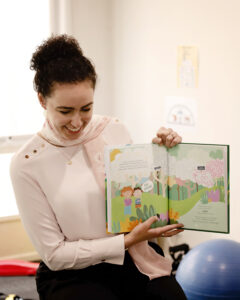The ability to regulate our emotions are an essential skill that contribute to a child’s wellbeing. They are important for coping with challenges, building healthy relationships, and building long-term success. Parents can play an important role in fostering emotion regulation skills in their children.
Help your child build emotional literacy skills
Support your child to understand and identify different emotions in themselves and others. Emotional literacy requires someone to have the language to name different emotions. Parents can support this by:
- Drawing attention to character’s emotions when reading books together
- Pointing out and labelling emotions of people and characters in movies and TV shows
- Reflecting back the emotion they see their child experiencing in the moment
- Helping their child label emotions they see other people experience at home, in the park, at kindergarten/school
Support emotional awareness
Provide a safe space for open communication about emotions at home. Make this a judgement-free zone where all emotions are “ok”, as long as our actions are safe. Use age-appropriate language to help your child express what emotion they are feeling in the moment. Clarify with your child what they have said, to ensure they feel understood. Validating and normalizing feeling different emotions helps support wellbeing for children.
Model healthy emotional expression
Model how you identify and express your own emotions across the day. Children benefit from watching how others discuss and cope with strong emotions in healthy ways. It is important not only to do this for positive emotions, but also uncomfortable ones. Consider sharing when you feel worried, frustrated, or disappointed, and verbalise which strategies you use to cope with these feelings.
Teach problem-solving skills
Help your child to develop a toolbox of problem-solving skills that they can use when they encounter difficult situations:
- Brainstorming possible solutions and picking the best one for the problem
- Writing a pros and cons list
- Forecasting the consequences for future actions
- Taking the perspective of other people involved
Develop a set of calming strategies
Help your child figure out which types of activities help them feel calm when their body and mind is dysregulated. Examples could include:
- Talking to someone about the problem
- Going for a walk, riding a bike, or
- Creative expression of feelings (draw or paint the feeling)
- Mindfulness relaxation exercises
- A healthy distraction (e.g. favourite movie, time with friends/family).
Written by Alex Felix-Faure, Senior Psychologist at De Silva Kids Clinic.

